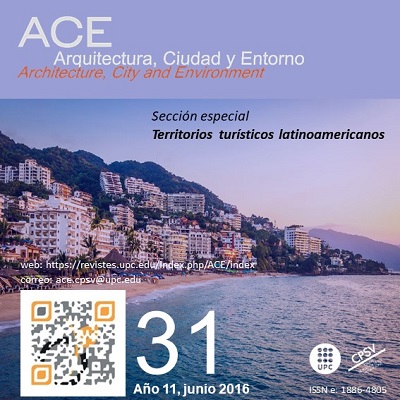Ciutat, processos territorials i cultura pop a Amèrica Llatina: zombis, extraterrestres i imaginaris malèfics
DOI:
https://doi.org/10.5821/ace.11.31.4657Paraules clau:
imaginaris urbans, exclusió, segregació socioespacial urbanaResum
El treball aborda els canvis en les visions sobre l'horror en films de terror i ficció i com aquesta visió transcendeix a les concepcions culturals sobre el indesitjable. Estableix una anàlisi dels films d'horror en els quals s'exhibeixen morts vivents i alienígenes utilitzant una mostra representativa de pel·lícules emblemàtiques sobre el tema, que permetin entendre com en l'evolució dels elements que estableixen l'horror en la trama, poden interpretar algunes maneres en què podríem entendre les ciutats contemporànies i les maneres en què els seus habitants les conceben. S'utilitza per a aquest propòsit el mètode hermenèutic analògic, emprant els films i a la ciutat com textos a interpretar, estudiant paral·lelismes i analogies que revelin continguts comuns subjacents. Es traça una caracterització dels elements detectats, per establir paral·lelismes amb elements de la ciutat i els seus personatges. A la part final de l'article s'intenta identificar els canvis en els imaginaris urbans que revelen aquests documents de la cultura pop, i com aquests se'ls pot relacionar amb el que s'ha denominat "imaginaris urbans malèfics" i que pot ser un element per explicar la necessitat d'aïllament que els habitants urbans de Llatinoamèrica experimenten en l'actualitat a través de la construcció de conjunts habitacionals tancats i amb controls d'accés.Descàrregues
Publicades
Número
Secció
Llicència
| CRITERIS DE PROTECCIÓ INTEL·LECTUAL |
En aquest moment es compta amb la protecció de la Oficina Espanyola de Patents i Marques, mentre que la protecció global s'està tramitant davant la Organització Mundial de la Propietat Intel·lectual (OMPI/WIPO). Així mateix, la Oficina del Número de Sèrie Estàndar Internacional (ISSN) ha otorgat els següents números: 1886-4805 (versió electrònica) i 1887-7052 (versió en paper). |
| COPYRIGHT |
El contingut dels articles i els comentaris en ells expresats són responsabilitat exclusiva dels seus actors, i no reflexen necessariament la opinió del Comité Editor de la revista. Els treballs publicats per ACE queden sotmesos a la llicència CC BY-NC-ND 3.0 ES http://creativecommons.org/licenses/by-nc-nd/3.0/es/ La qual cosa vol dir que les persones autores només tenen i retenen els drets d'autor dintre de les limitacions imposades per la anterior llicència |





































